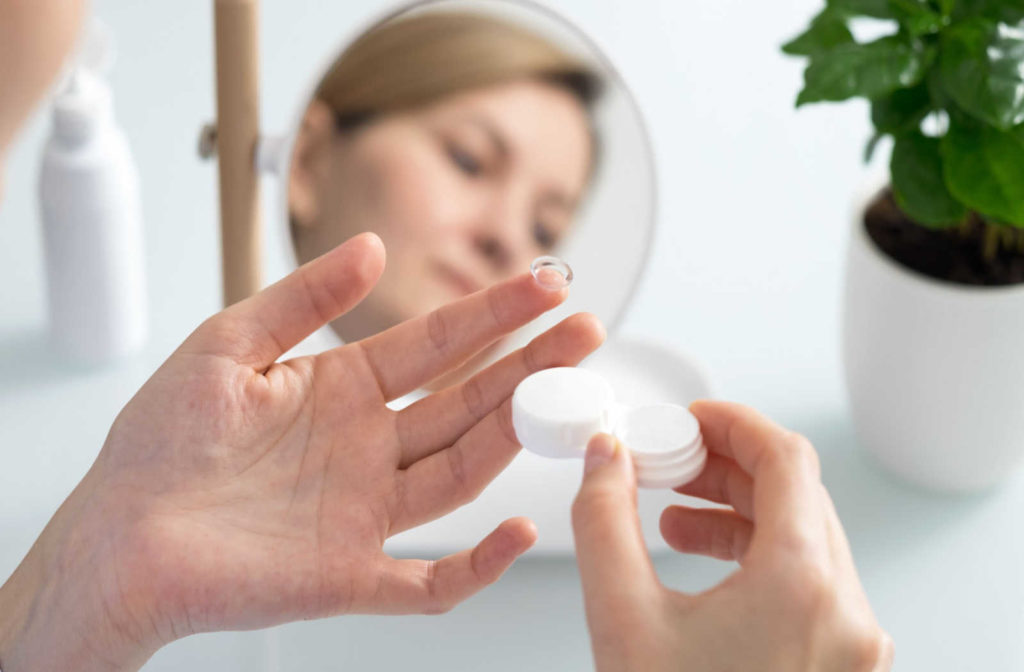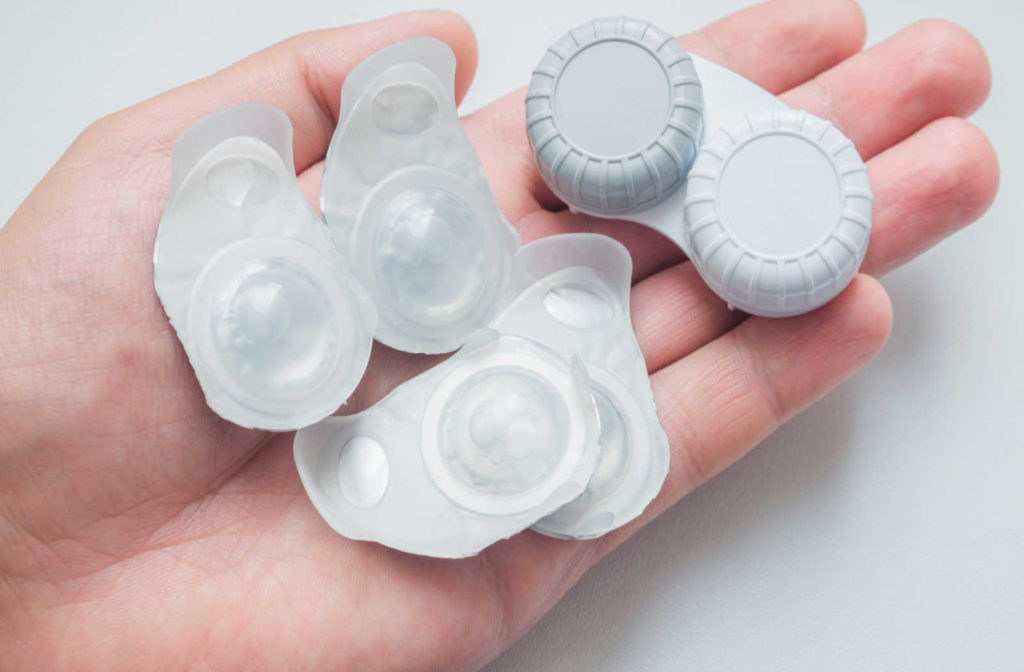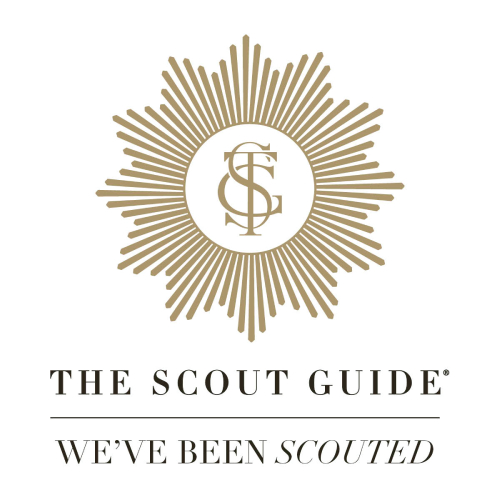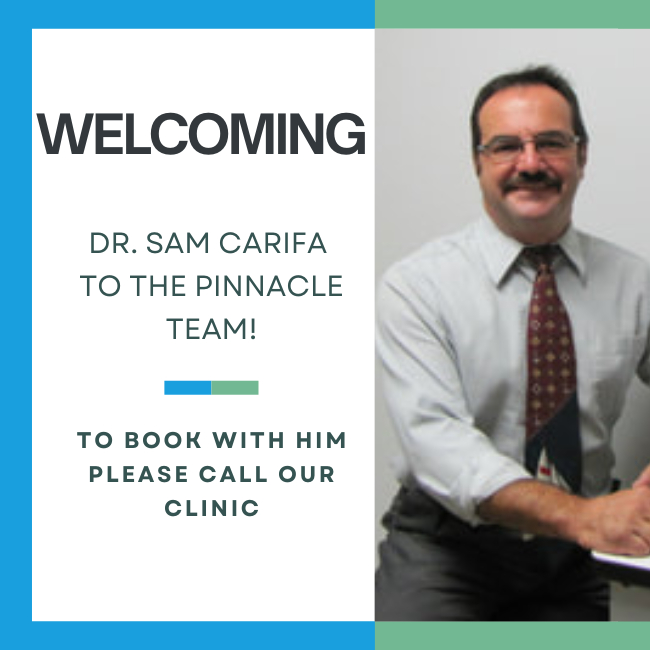A contact lens fitting is an essential part of healthy contact lens wear. Imagine trying to wear shoes 3 sizes too big or 1 size too small. You might trip over too-long shoes or get blisters from rubbing. Similarly, a fitting helps find the contact lens in your size. An improper lens fit can affect the clarity of your vision or increase the risk of eye conditions, including dry eye.
A contact lens fitting is usually a 3-step process: the exam, the fitting, and a trial period. Both the exam and fittings involve evaluations or tests to help create a lens fit for your eye health and visual needs.
Contact Lenses vs. Eyeglasses
The first step of a contact lens fitting, the contact lens exam, shares similarities with a routine comprehensive eye exam. But, there are notable differences. Both types of exams assess eye health and vision. Still, a contact lens exam has a slightly narrower focus as it evaluates eye conditions related to contact lens wear.
Another significant difference is prescription. A comprehensive eye exam tests visual acuity and refraction to evaluate your prescription—but it only determines an eyeglasses prescription.
A contact lens and eyeglass prescription differ because of the shape of the lens and the distance from the eye. A contact lens rests directly on the eye’s surface. Therefore, glasses need to compensate for the further distance with a greater surface area to offer the same visual enhancement. Additional measurements are required as contact lenses are shaped to the eye’s surface.
Standard contact lenses conform to the cornea’s shape. The cornea is the clear front of the eye. When it’s too curved too steeply or too slightly, it can cause blurry vision at specific viewing distances. The cornea can also have irregular curves, resulting in astigmatism—affecting near and distant vision simultaneously.
Mapping the cornea’s unique curves creates a personalized fit, so your lenses can fit comfortably and function effectively. The eye’s surface is scanned with corneal topography, providing a detailed 3D view of the cornea.
What Is a Contact Lens Fitting? The Exam Step-by-Step
Like a comprehensive eye exam, standard steps or evaluations are performed during every contact lens exam. There may be additional tests, if necessary, determined by your optometrist.
For example, dry eye is a chronic condition related to tear quality. People with severe dry eye may be a poor match for standard contact lenses. If dry eye is a concern, your optometrist may perform additional evaluations to see if there’s a healthy lens option you can try. Or, treating dry eye first might allow for more contact lens options later.
Some steps you can expect before fitting your lenses include evaluating eye shape and pupil size.
Corneal Shape & Curve
Keratometry measures the cornea’s curvature and shape. The scan helps determine the required lens power (prescription) and the cornea’s health. Corneal topography (a type of keratometry) can also help optometrists diagnose eye conditions affecting the cornea, such as keratoconus.
The evaluation helps optometrists determine the lens size (or fit) and what type of lens may benefit you. For example, someone with an irregular cornea (such as high astigmatism or keratoconus) may achieve clearer vision with an RGP (rigid gas permeable) lens rather than a soft contact lens. An RGP lens retains its shape, even when you blink, whereas a soft lens conforms to the shape of your eye—which can be a disadvantage when your eye shape is irregular.
Pupil & Iris Size
Light enters the eye through the pupil. Although the pupil looks black when you look at your eye, it’s actually a hole. The iris (the colored part of the eye) surrounds the pupil and controls whether the pupil expands or shrinks. A wider pupil allows more light inside, whereas a smaller pupil focuses a smaller amount of light. The opening size helps us change focal distances (near or far).
The average pupil size ranges from 4–8 mm (expanded) and 2–4 mm (contracted)—but your pupil may be smaller or larger than the average.
A standard contact lens covers the pupil and iris, assisting the cornea and pupil when focusing light. Pupil alignment within the lens is crucial for clearer vision. For example, when the pupil is too large for the lens, the wearer can experience light distortion or blurred vision.

How Are Contacts Fitted?
After evaluating the health of your eye, your optometrist can narrow down the types of lenses appropriate for your eyes and lifestyle. The measurements help inform the fit, but trying a few lenses is still an essential part of the process.
For example, you may be a size 7 shoe. But you may be a 7 ½ or an 8 with a different brand or shoe style. That’s why the contact lens exam and fitting go hand-in-hand. Both are crucial for finding a comfortable, appropriate fit.
When you try on your first pair of lenses, there can be an adjustment period. Therefore, testing on the lenses is essential, like walking around in a new pair of shoes in a shoe store. We provide lenses based on your measurements, so you can take a look and feel for yourself.
Your optometrist examines the lenses, including your vision, during the fitting. You can go home with the lenses when the trial pair feels and looks like a suitable fit. You get the chance to live with your lenses, to see how you feel about the fit daily.
At a follow-up appointment, your optometrist assesses the fit again. At the follow-up, you can also voice your concerns (if you have any). For example, you may like the comfort of your soft contact lens but want to try a different replacement schedule—such as daily, weekly, or monthly.
When you feel confident about your lenses and your optometrist determines the fit is still appropriate, we can order your lenses. With a proper fit, we can help you achieve clear, comfortable vision.
Do You Need a Contact Lens Fitting?
If you are considering using contact lenses, it is highly recommended to undergo a contact lens fitting.
A proper contact lens fit is a top priority. The fit affects your prescription’s effectiveness and your eye’s health. You may love the same lens style for your lifetime of wear or need to adjust to changing needs. Whether you’re looking for your first pair, or want a fit update, visit Pinnacle Eyecare for your exam and fitting.






